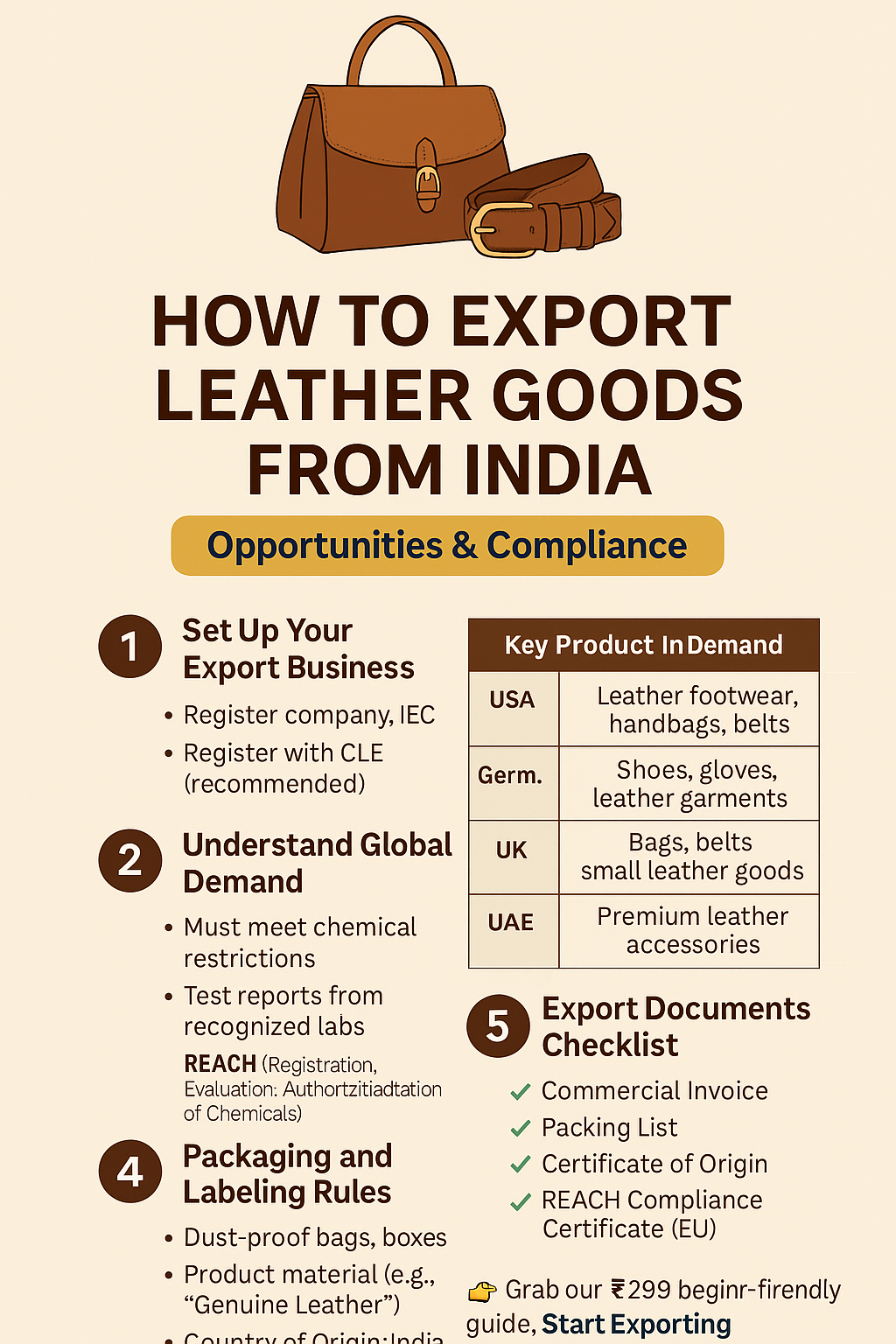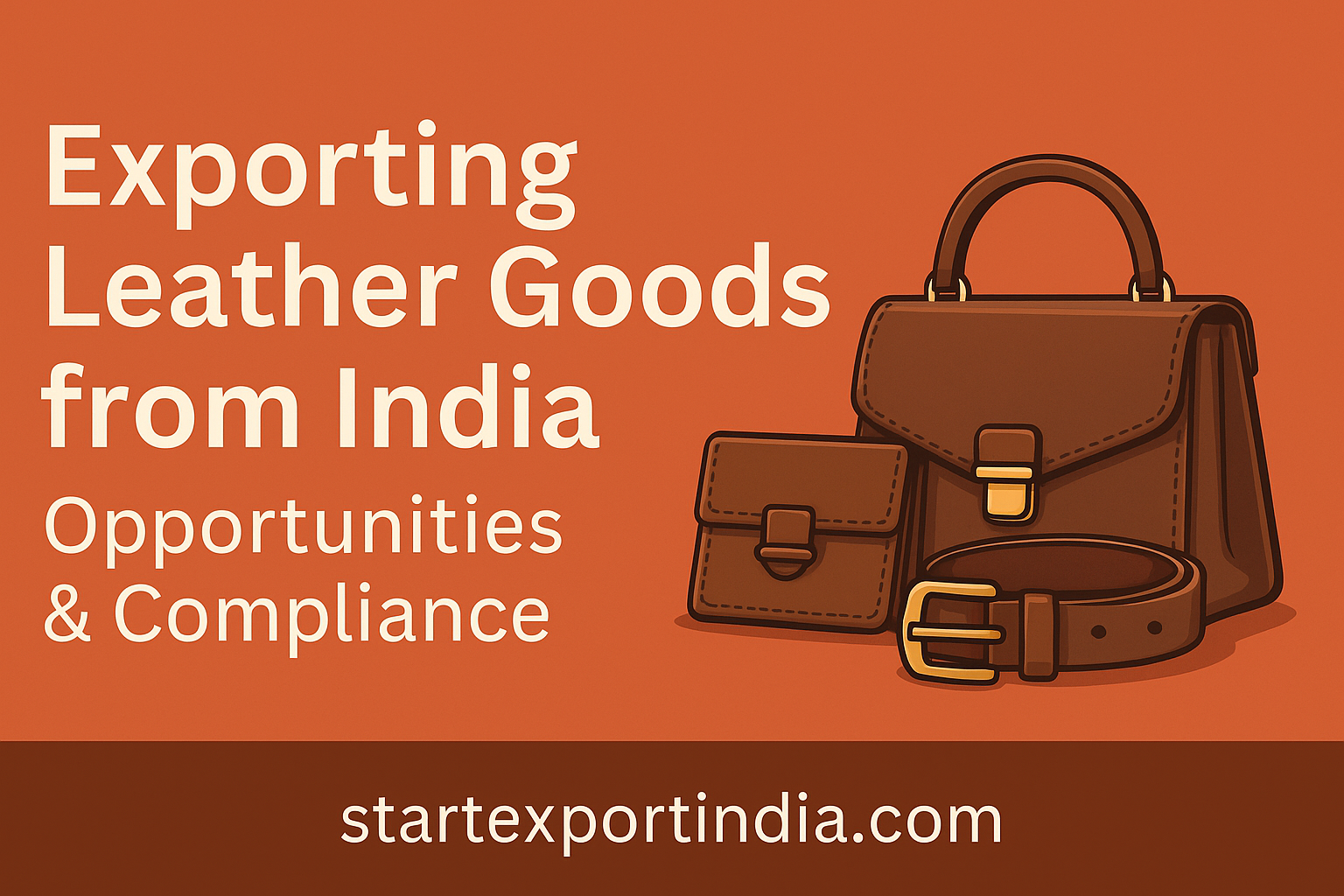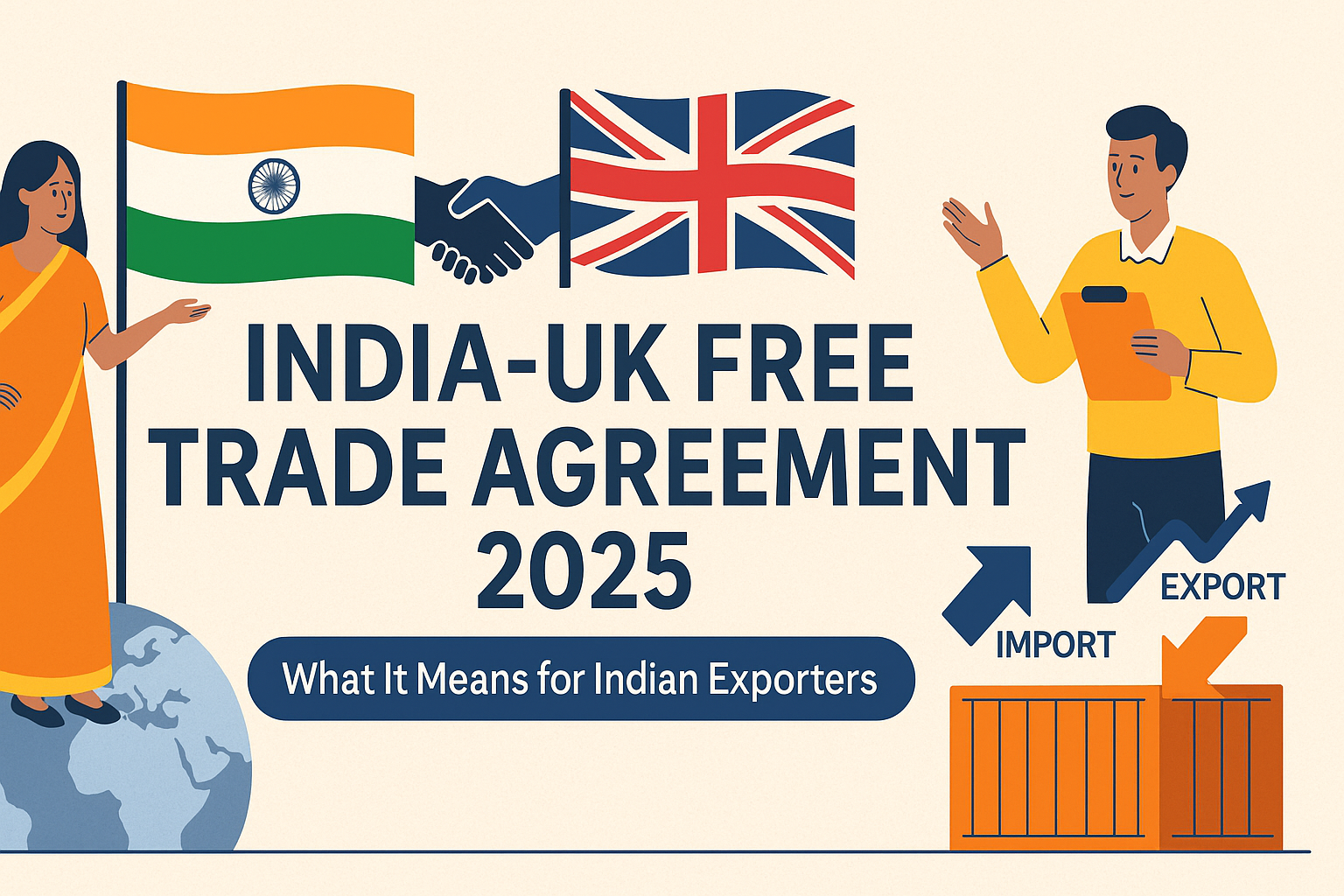Exporting Leather Goods from India: Opportunities & Compliance
India is the second-largest producer of leather goods globally, renowned for its craftsmanship, quality, and competitive pricing. From leather handbags to belts, shoes, and accessories, Indian leather exports are a major contributor to global fashion and retail markets.
Here’s your detailed guide on how to export leather goods from India, including certifications like REACH compliance, key markets, and challenges to watch out for.

✅ Step 1: Set Up Your Export Business
To start exporting leather products:
- Register your company (GST, MSME/Udyam Registration recommended)
- Obtain Import Export Code (IEC) from DGFT
- Register with CLE (Council for Leather Exports) – highly recommended for benefits like subsidies, training, and exhibition participation.
🌍 Step 2: Understand Global Demand for Indian Leather
Top importing countries:
| Country | Key Products in Demand |
|---|---|
| USA | Leather footwear, handbags, belts |
| Germany | Shoes, gloves, leather garments |
| UK | Bags, belts, small leather goods |
| Italy | Premium leather accessories |
| UAE | Bags, wallets, footwear |
💡 Indian leather is particularly valued for affordability, hand-finishing, and custom designs.
🔍 Step 3: Compliance – Especially REACH for EU Exports
REACH (Registration, Evaluation, Authorization, and Restriction of Chemicals) is the EU regulation to protect human health and the environment.
For leather goods:
- Must comply with restrictions on chemical substances like chromium VI, azo dyes, lead, cadmium, formaldehyde
- Need test reports from recognized labs certifying compliance
- No dangerous residues allowed in finished leather products
📄 Tip: Many European buyers demand a REACH Declaration of Conformity with every consignment.
Other Certifications (optional but boosts trust):
- ISO 9001: Quality Management
- SA 8000: Social Accountability (for factories)
- Leather Working Group (LWG) Certification
📦 Step 4: Packaging and Labeling Rules
International buyers expect professional packaging:
- Use dust-proof bags, recyclable boxes
- Label products with:
- Product material (e.g., “Genuine Leather”)
- Size/Dimensions
- Manufacturer/Exporter details
- Country of Origin: India
- Care Instructions (for premium buyers)
🚢 Step 5: Export Documents Checklist
- Commercial Invoice
- Packing List
- Bill of Lading / Airway Bill
- Certificate of Origin (preferably GSP for EU duty benefits)
- REACH Compliance Certificate (for Europe)
- CLE Membership Certificate (if claiming export incentives)
⚠️ Challenges in Leather Export
- Stringent Environmental Standards: Many importers insist on eco-friendly tanneries and chrome-free leather.
- Price Competition: Competing with China, Vietnam, and Bangladesh.
- Fluctuating Raw Material Costs: Leather hides price volatility affects profitability.
- Trade Barriers: Tariffs, customs delays in certain countries.
🔎 Solution: Focus on niche luxury, sustainable leather, and artisan craftsmanship to stand out.
✅ Conclusion
With REACH compliance, high-quality production, and professional branding, Indian leather exporters can thrive globally. Despite competition, India’s artisanal skills and diversity in leather products give exporters a strong edge.
👉 Want to master export pricing step-by-step, including Incoterms, margin, freight, and refunds?
📘 Grab our ₹299 beginner-friendly guide:
Start Exporting from India in Just 30 Days
Visit 👉 StartExportIndia.com




